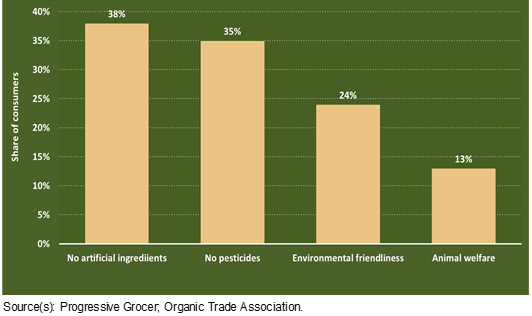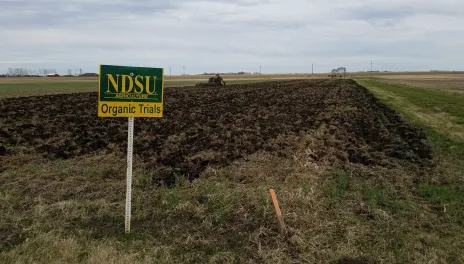Rooted in resilience: the rise of organic farming in North Dakota
Across the rolling farmland and windswept prairies of the Northern Great Plains, a quiet transformation is taking root. Organic agriculture - once considered a niche movement - is steadily gaining ground in North Dakota and its neighboring states. Farmers, consumers, and policymakers alike are taking a fresh look at how food is grown, what it means for our land, and how agriculture can adapt to meet the demands of sustainability and profitability.
In North Dakota, organic farming still represents a relatively small portion of the state’s overall agricultural landscape, but it is expanding steadily in acreage and economic significance. This shift is reflected in national and state-level data. Between 2014 and 2021, the acreage of organic crop production increased substantially across the U.S. (Fig. 1), and North Dakota had about 129 certified organic farms. Nationally, the number of organic farms declined slightly, but land in organic production and overall value continued to grow, signaling greater investment and profitability within existing operations.

Consumer demand is a key driver behind this trend. Recent surveys (Fig. 2) show that 38% of consumers prioritize food with no artificial ingredients, 35% seek products grown without pesticides, and 24% value environmentally friendly production methods. These preferences are creating strong market incentives for organic farming, which emphasizes soil health, biodiversity, and the avoidance of synthetic inputs.

Organic farms in North Dakota are cultivating a diverse mix of crops, including small grains, oil seeds, row crops, and pulses. Some farms are also diversifying into organic beef cattle and forage production. While the number of operations has fluctuated, the value of organically managed land and its potential for long-term resilience are gaining attention. North Dakota leads the nation in organic production of several specialty crops, like buckwheat and flaxseed.
Why are more farmers considering organic? For some, it’s about capturing a price premium in a market that rewards environmental stewardship and health-conscious production. For others, it's a return to more holistic land management, relying on crop rotation, cover cropping, composting, and mechanical or cultural weed control rather than synthetic fertilizers and pesticides. In a state where soil erosion, water quality, and extreme weather are growing concerns, organic methods are seen as a tool for building soil health and farm resilience.
For North Dakota and the Northern Great Plains, organic agriculture offers more than just a farming method - it offers a way forward. In an era marked by climate extremes, supply chain disruptions, and rising input costs, organic systems prioritize soil health, biodiversity, and community resilience. Whether you’re a farmer considering a shift or a consumer curious about what “organic” really means, the future of food on the prairie is rooted in innovation - and in the soil beneath our feet.
Qasim Khan, Ph. D.
Qasim.Khan@ndsu.edu
Organic Cropping Systems Agronomist
